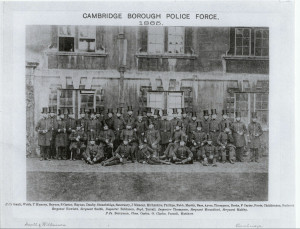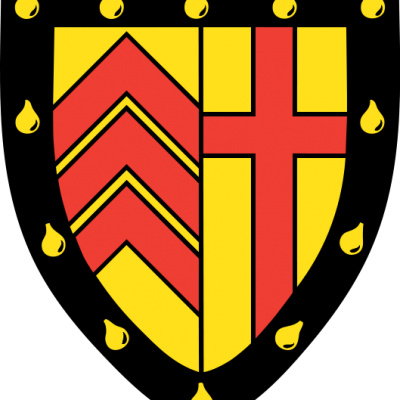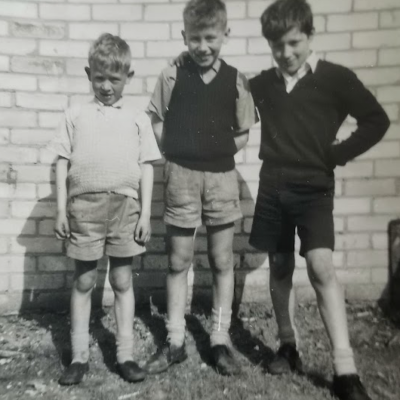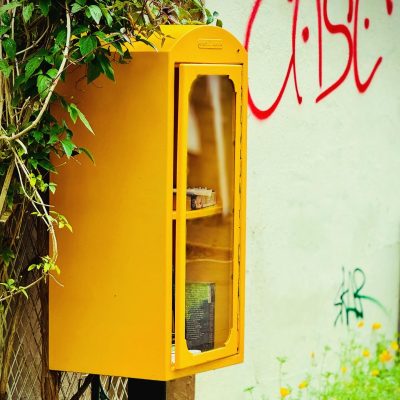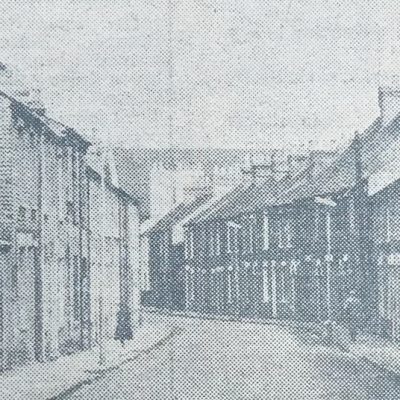Search by topic
- archaeology
- Building of Local Interest
- charity
- church
- crime
- dressmaker
- fire
- Great Eastern Railway
- Listed building
- Mapping Relief
- medieval
- oral history
- poverty
- Public House
- Rattee & Kett
- Religious House
- Roman
- scholar
- school
- Then and Now
- tudor
- women
- work
- world war one
- world war two
Search by text
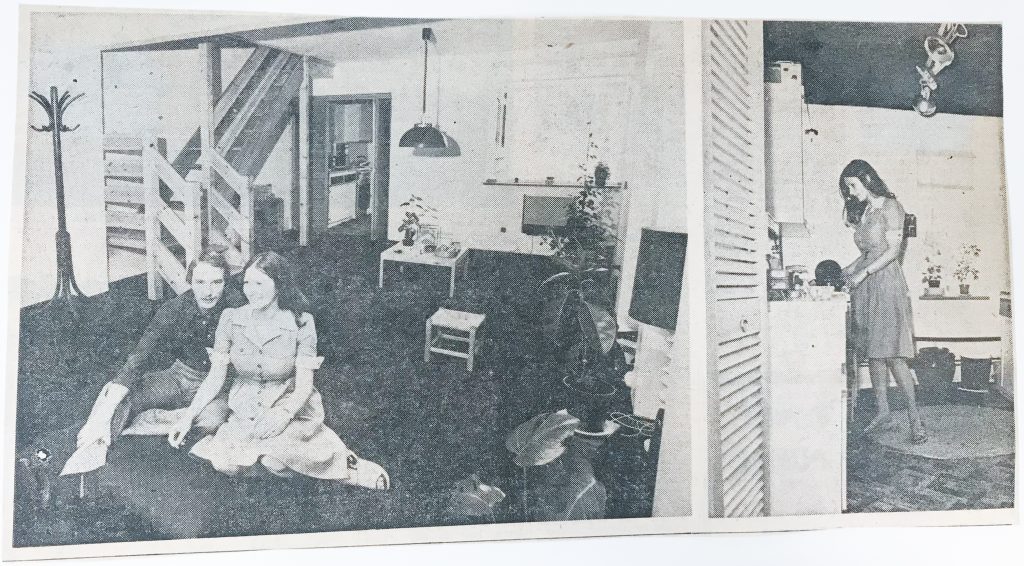 "Home Sweet Home" - newlyweds, Norman & Wendy Jarrold, show off their home in a 1975 newspaper article by Pauline Hunt. Image courtesy the Cambridgeshire Collection.
"Home Sweet Home" - newlyweds, Norman & Wendy Jarrold, show off their home in a 1975 newspaper article by Pauline Hunt. Image courtesy the Cambridgeshire Collection.119 Gwydir Street
History of 119 Gwydir Street
Edward & Mary Kerbyshire
Edward Kirbyshire was born in King Street, Cambridge in January 1835. He joined the 9th Light Infantry at the age of 17. After serving two years in Ireland, he was transported with the regiment to Balaclava in 1854, where he fought in the Crimean War. Although he was wounded at Redan, he continued to served until peace was signed in 1856 before returning to England.
Edward joined the Borough Police Force in October 1856. Transferring from the uniform branch to plain clothes, he later became a Detective Sergeant and then Detective Inspector. He retired in September 1894, after 38 years in the Force.
Edward Kirbyshire is pictured in the centre of the back row (11th from left) in this photograph of the Cambridge Borough Police Force taken in 1856.
When he retired from the Force, Edward was active in charitable work. He was a longstanding member (65 years) of the Ancient Order of Foresters society, which had established in 1834. He died on 17 June 1924, aged 89. His funeral took place in the chapel of Mill Road Cemetery on 28 June.
Mary Kirbyshire (née Pinner) was born in Shelford, near Cambridge, in c. 1837 and died in 1905 aged 68.
The couple had three sons, Arthur, Walter E. and Samuel (b. 1865, married Alice Perren in 1896) and two daughters, Emily and Annie Elizabeth (married Herbert Charles Holder in 1890). In 1861 the family was living at 36 Willow Place before moving to 119 Gwydir Street, which remained the family home until Edward died in 1924.
More details about Edward & Mary’s grave records and some of their children can be found on the Mill Road Cemetery website.
1868
Riot at gate of Christ’s College in which Detective Kirbyshire was present
Detective Kirbyshire oversaw a pocket picking case in Harston.
1871 unnumbered
Edward Kirbyshire, 35, detective sergeant
Mary, 33,
Arthur, errand boy, b Cambridge
Walter E, 11, b Cambridge
Samuel, 5, b Cambridge
Annie, 4, b Cambridge
1881
Edward Kirbyshire, head, 45, police officer, b Cambridge
Mary, wife, 43, b Shelford
Arthur, son, 23, pawn brokers assistant, b Cambridge
Walter, son, 22, post office sorting clerk, b Cambridge
Samuel, son, 15, junior clerk railways, b Cambridge
Annie, daughter, 14, scholar, b Cambridge
Arthur worked at Frederick Morley’s Pawnbroker shop at 101-2 Fitzroy Street where he became the manager. He married Elizabeth Ann Abigail Scarr (the daughter of shoemaker James Scarr and his wife Sarah who lived at their shoe shop at 35 Union Road) in 1883. In 1891 he is listed as living at 7 Hobson Street with the Morley family. Arthur and Elizabeth had six children and moved to Abbey Road where they lived at number 2 (1901) and number 7 (by 1911) where Arthur died in 1934 aged 76 years. old.
Their eldest son Edward Herbert Kirbyshire worked as a pastry chef at New College in Oxford. He married Alice Victoria Lofts at Abbey Church in Cambridge on 4th October 1913. He died just over three months later, aged 25 years old.
Their second son Arthur Scarr Kirbyshire was noted in the newspapers in 1913 for being a ‘successful local candidate’ in the Natural Sciences Tripos at Downing College.
1891
Edward Kerbyshire, 56, police inspector
Mary
Samuel, 25, railway clerk GER, b Cambridge
In 1896, Samuel married Alice Perren who grew up at 176 Gwydir Street. Her father worked on the railway as an engine driver. The couple had a son called Harold Richard Kirbyshire. Alice appears to continue living at her family home until her death in 1935.
1901
Edward Kirbyshire, 66, police inspector retired,
Mary, 64, b Shelford
1911
Edward Kirbyshire, 76, police pensioner, b Cambridge
Mary Elizabeth Kirbyshire, grand daughter, 26, house keeper, b Cambridge
1913
Edward Kirbyshire, ex police inspector
1915
CIP 30.4.1915: Roll of Honour: Enlistment with 3rd/1st Cambs: H R Kirbyshire, Gwydir Street
1962
William Edward Tingey
Born 28 Jul 1892 in Cambridge. Died 8 May 1962. Married Florence Amelia Found in 1942. William was the son of builder’s carman William Tingey & Minnie Male of 59 Sturton Street.
1970
William Spring
1975
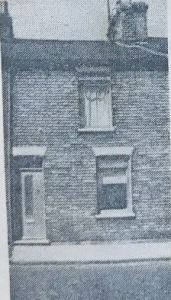
Photograph of the front of 119 Gwydir Street a Cambridge Evening News feature by Pauline Hunt in 1975. Image courtesy the Cambridgeshire Collection.
1975.08.08 Cambridge Evening News, Pauline Hunt: Home sweet home after a year’s tender loving labour. From the outside, number 199 Gwydir Street is an unpretentious terraced house whose front door opens straight on to the pavement.
But go through that door and you enter a large, elegant room that could have come straight from the pages of a glossy magazine. The deep brown carpet set off by the plain white walls, elegant light fittings and lamps, the white rocking chair… The only touch of colour not brown or white, is the deep green shade of the adjustable hanging light fitting, the colour reflecting the plants dotted around.
In this same space – 23 feet by 16 – just a year ago were two small living rooms, and a steep staircase leading up from a narrow entrance hall. Now open plan pine stairs lead straight out of the room. The transformation has not been achieved by spending large sums of money. It is far more due to the sheer hard work of the young couple who bought the house, knowing nothing about building or any of the skills involved. Norman Jarrold, a hairdresser, and his fiancee, Wendy, bought the house last summer, decided what they wanted to do and had the plans accepted three months later. After that came an enormously hard grind both working every evening on Sundays – Norman is busy hairdressing on Saturdays – during the six months until the couple married at Easter…
-
High house prices mean that many old houses like this (above) are falling into decay. Forced to consider houses that would have been unfashionable a few years ago, people like the Jarrolds are showing what can be done.
-
The Jarrolds enjoy the spaciousness of their living room (right). They have very little furniture – one they are determined to get only things they really like, and gradually.
-
Norman and Wendy added a new window to the kitchen (far right) brown tiles, a cork ceiling and smart light fittings – it becomes streamlined.
Contribute
Do you have any information about the people or places in this article? If so, then please let us know using the Contact page or by emailing capturingcambridge@
License
This work is licensed under CC BY-NC-SA 4.0





